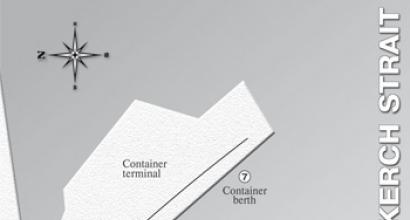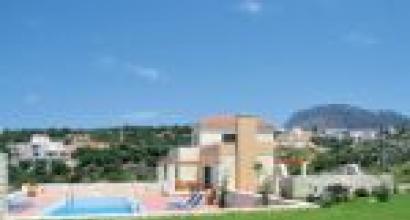Blue pond on Hokkaido island, Japan. Blue Pond Biei on Hokkaido Island, Japan Blue Pond
The Biei Blue Pond is comfortably located (or rather, it was located almost artificially, but more on that below) at the foot of Mount Tokachi, on the Japanese island of Hokkaido.
As you may have guessed, the reservoir owes its unambiguous name to the unreal blue color of its water. Moreover, the color changes from rich bright blue to soft turquoise. It depends on the time of day or the angle chosen by the viewer.
The color of Biei Pond is still a subject of debate among scientists. But its mystery still remains unsolved. There are some assumptions about this. One of them boils down to the fact that water from geothermal springs, when mixed with river water rich in aluminum hydroxide, forms a mixture capable of reflecting light approximately like the atmosphere of our planet. Accordingly, the pond acquires its legendary and unique color.
 This is how the Blue Pond Biei is born
This is how the Blue Pond Biei is born Biei Pond was formed relatively recently. The history of its origin goes back only to 1988, when the local leadership decided to build a dam to protect the population from mudflows that accompany eruptions. In 1989 the dam was built. As a result of this, water flowing from the mountains began to fill the nearby forest. This contributed even more to the charm of the pond: now the tree trunks shoot into the sky directly from the water.
 Blue Pond Biei - winter view
Blue Pond Biei - winter view The combination of incredible blue color with mysterious trees naturally began to attract not only local tourists, but also travelers from all over the world. Now such an extraordinary attraction has become one of the calling cards of Japan. Even the "fruit" company (the one that is Apple) used the photo of Biei Pond in its OS X Mountain Lion operating system.
The pond is most attractive with the onset of cold weather, when thin ice begins to cover its surface. And if it snows, the pond takes on a special charm.
 Biei Pond in winter
Biei Pond in winter If you want to see the Biei Blue Pond, first get to Tokyo, then take a train to the city of Biei, and finally take a bus to the desired stop. Then 10 minutes walk to the pond.
The pond is quite compact, so a walk around it will take no more than half an hour.
Blue Pond Biei photo



The small Biei reservoir, known throughout Japan for the amazing blue color of its water, accidentally appeared on the left bank of the Bieigoa River (Hokkaido Island) when work on the construction of a dam was carried out here in the late eighties of the 20th century.
It was necessary to block the mudflow released during the eruption of the Tokachi volcano. The pond, located directly at the foot of the flammable mountain, still puzzles scientists who cannot explain the mystery of its unusual aquamarine color.
According to one version, the purest turquoise color of Biei is due to the Platinum hot springs located two and a half kilometers (towards the northwest); on the other, large deposits of aluminum, whose hydroxide gives the water a unique brightness and richness.
Depending on the weather conditions or the observation point, the hue of Biei Pond also changes, ranging from deep blue to pale turquoise. Dried birches and larches protruding from the center of the reservoir give Biei a truly fabulous look. In winter, the pond is covered with a thin ice crust and looks even more charming than in summer.
You can get to the Blue Pond on your own. To do this, you need to take a train on the Tokyo-Biei route, then take a bus or rent a car. From the city of Biei, the blue landmark is only a fifteen-minute drive plus a ten-minute walk from the bus stop. There is free parking for cars next to the pond. Biei itself can be walked around in half an hour.
Blue Pond in Biei Hokkaido - VIDEO
MAP
Blue Pond Biei - PHOTO









Blue Pond is located on the left bank of the Bieigoa River, southeast of Biei City in Hokkaido, Japan. This amazing body of water can be found 2.5 kilometers northwest of Platinum Hot Springs at the foot of Mount Tokachi. The pond got its name because of the bright blue hue of the water, with many wooden pillars visible above the surface of the water.
The blue color of the pond is not fully understood, but is attributed to the presence of aluminum hydroxide in the water, which reflects the shorter wavelengths of blue light in the same way that the Earth's atmosphere does. The color of the reservoir also changes depending on the angle from which you look at it and even depending on the time of day.

The picturesque town of Biei has been a popular tourist destination for years, but Blue Pond became a global attraction after Apple included a photo of it in its new Mountain Lion operating system.









Hokkaido- the second largest island of Japan. About 10% of the island's area is occupied by more than 20 national parks, making it a recognized active center of the country. The amazing blue pond can be found 2.5 kilometers northwest of Platinum Hot Springs at the foot of Mount Tokachi, the pond is located on the left bank of the Bieigoa River, southeast of the city of Biei in Hokkaido. Blue Pond(Blue Pond) got its name because of the bright blue hue of the water, with many wooden pillars visible above the surface of the water.
(13 photos of an amazing blue pond)
Trees grow in the center of the Blue Pond, and therefore it seems that this place is enchanted. However, there was no magic here. Moreover, this place is very popular among tourists. 
Scientists don't know what makes the pond's aquamarine-colored water, but one possible explanation is that there are rich deposits of aluminum near the river that feeds into the pond. Microscopic particles can fall to the bottom of the pond and reflect rays of light during the day, illuminating the water. 
The picturesque town of Biei has been a popular tourist destination for many years, but the Blue Pond became a global attraction after Apple included a photo of it in its new Mountain Lion operating system. 






Among the colored bodies of water that surprise people with their unusual shade of water is a small pond located on the Japanese island of Hokkaido. It is filled with deep blue water. This is not the natural shade that arises from the reflection of the azure sky. It is a rich color that gives the impression that the pond has been painted over. Interestingly, such suspicions were expressed in relation to the blue pond on the island of Hokkaido!

The authors of some publications dedicated to this pond wrote that the pond is being painted in order to attract tourists. But there is also a natural explanation for the unusual shade. The Blue Pond is located near the city of Biye, 2.5 km from another natural attraction of the island of Hokkaido - the Platinum hot springs, flowing at the foot of Mount Tokachi. The pond is fed by the waters of these springs, saturated with aluminum salts. This hydroxide creates a special effect of refraction of sunlight in water, enhancing the reflection of blue waves of the light spectrum, which makes the color of water bright turquoise.

The color of the water in the Blue Pond on the island of Hokkaido changes depending on the viewing angle, weather and time of day. The color varies within the turquoise palette, that is, the blue of the waters has either a light or a stronger admixture of greenish tones.

Due to the saturation of aluminum salts, the transparency of the water is low, and many photographers try to emphasize this effect. Sometimes it seems as if the pond is filled with thick oil paint. This effect is emphasized by the trunks of dried trees in the water near the shore.
Interesting visual effects are observed here in the cold season, when the pond is covered with ice, and everything around - trees, mountain slopes - is silver from frost or snow. However, many believe that the blue color of the pond looks most contrasting in the fall, against the background of yellow forest foliage.

It is interesting that this natural attraction appeared on the island relatively recently - after the eruption of the Tokachi volcano in 1989. Strictly speaking, this interesting body of water is the result of the joint actions of nature and man. The dam, built by the Japanese to protect against lava flows and mudflows that poured from the mountain after the eruption, led to the formation of a pond (this is a pond, not a lake). That is why flooded trees can be lined up in several rows near the shore. But the unusual blue color of the water is still the result of natural processes.


